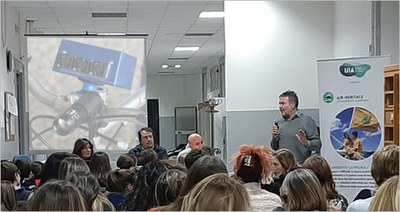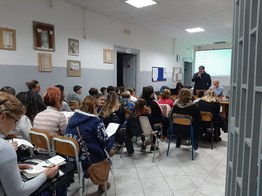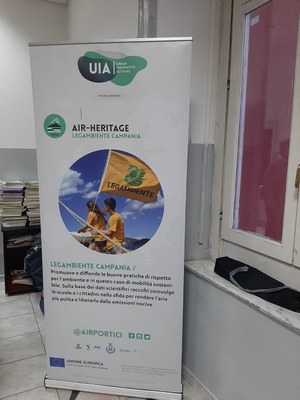Environment: Project for cooperative air quality monitoring begins
16/1/2020
 Thanks to the direct involvement of the citizenry, The European project, Air Heritage, for monitoring the quality of the air in the Portici area (Naples) has started up.
Thanks to the direct involvement of the citizenry, The European project, Air Heritage, for monitoring the quality of the air in the Portici area (Naples) has started up.
Air-Heritage is the outcome of teamwork with various players (ENEA, the Municipality of Portici, ARPAC, Legambiente Campania, Università “Federico II” (Naples) and TerrAria srl). The project has received financial support (approx. 4 million euros in all) via the third tender at a European level, “Urban Innovative Actions”.
This was the only Italian proposal selected out of about 170 applications Europe-wide. For the initial stage, a tour shall target the schools and the associations involved, providing information on the impact on air quality of the behaviour patterns of individuals, plus information on how to use the monitoring equipment (the smog-sniffer “nose” called MONICA: standing for MONItoraggio Cooperativo della qualità dell’Aria). The device can be easily attached to bicycles, prams or backpacks.
 It was developed by the Centro Ricerche ENEA research centre in Portici. Featuring sensor, geostatistical and artificial intelligence technologies, the device enables individual members of the public to monitor their own personal exposure to pollutants and to share their data with others, thus drawing up high-resolution spatiotemporal air-quality maps.
It was developed by the Centro Ricerche ENEA research centre in Portici. Featuring sensor, geostatistical and artificial intelligence technologies, the device enables individual members of the public to monitor their own personal exposure to pollutants and to share their data with others, thus drawing up high-resolution spatiotemporal air-quality maps.
“The aim of Air Heritage is to implement a cooperative citizen-science project involving a number of urban resources such as schools, associations, parishes, and local government bodies in order to raise awareness of the extent to which the behaviour of individuals affects air quality”, says the project manager, Saverio De Vito, a researcher at the laboratorio ENEA di “Sistemi ed Applicazioni Fotovoltaiche e Sensoristiche” (photovoltaic and sensor systems and applications laboratory) at Portici.
 Careful monitoring of air quality at Portici is based on the Decision Support System (DSS). This system was developed by the company from Milan, TerrAria. It features various software resources to combine data on air pollutants with meteorological and traffic data.
Careful monitoring of air quality at Portici is based on the Decision Support System (DSS). This system was developed by the company from Milan, TerrAria. It features various software resources to combine data on air pollutants with meteorological and traffic data.
The DSS system can provide local authorities with information on how best to improve atmospheric pollution conditions, e.g. curbing traffic levels, creating restricted traffic areas or even organising “pedibus” services, i.e. accompanying groups of very young schoolchildren to school on foot. “For some time now, ENEA has engaged in research and experimentation in this sector.
Once more, ENEA is a major citizen-science trailblazer, fostering dissemination of technological approaches”. De Vito also notes, “ENEA also delegates to its researchers the task of implementing the so-called ‘third mission’, namely dissemination of scientific content, through dedicated projects”.
For further information:
Saverio De Vito, ENEA - Laboratorio Sistemi ed Applicazioni Fotovoltaiche e Sensoristiche, saverio.devito@enea.it
